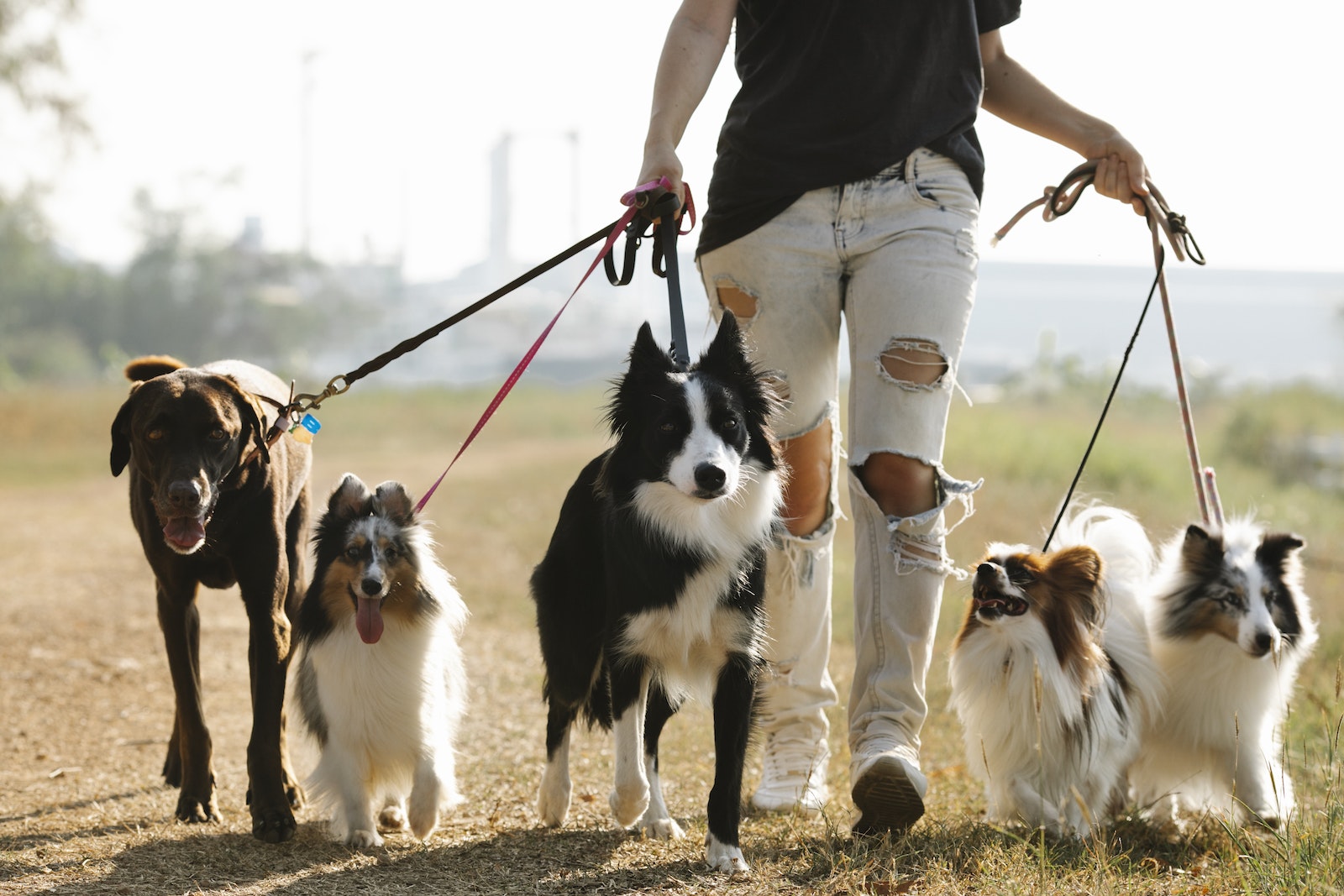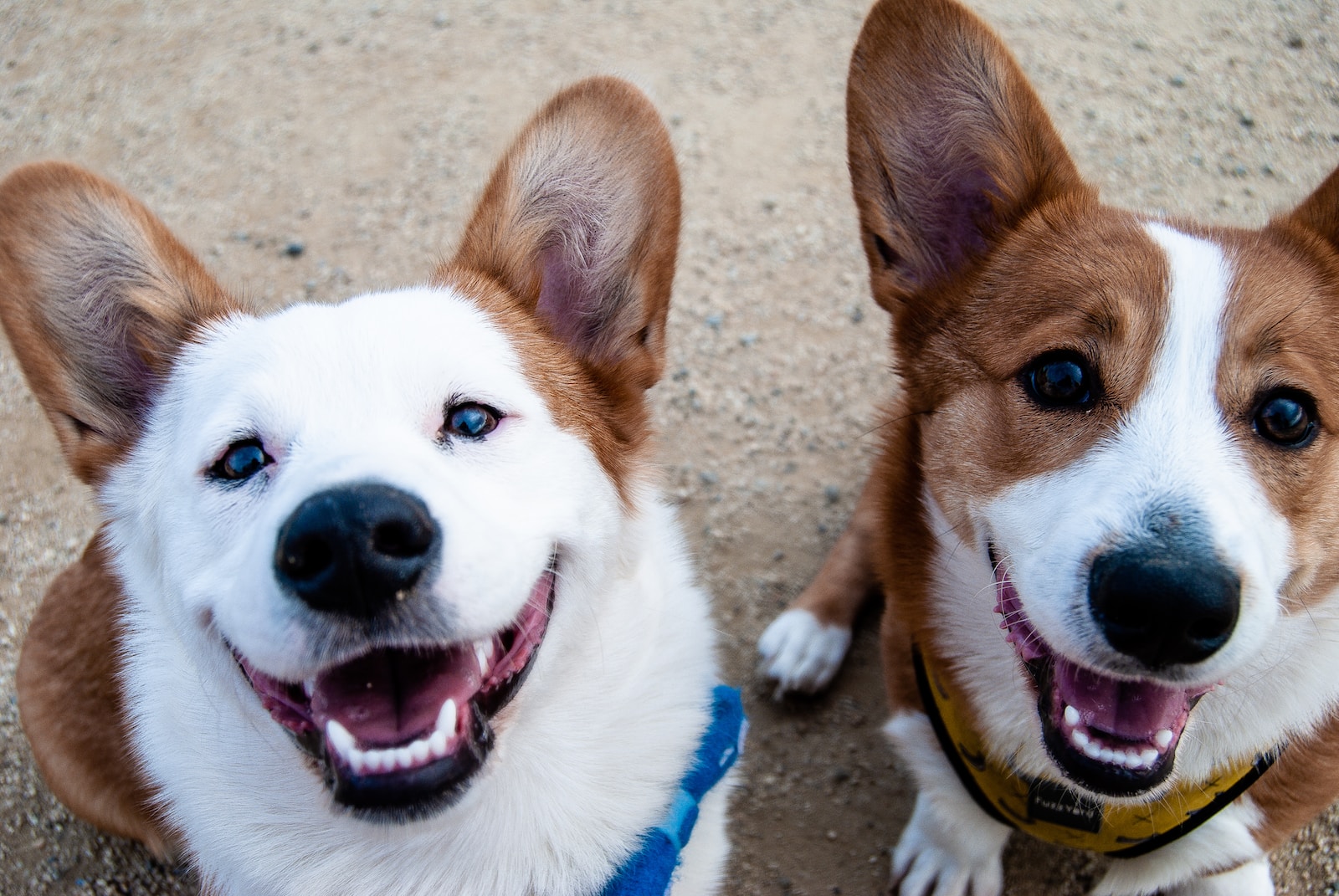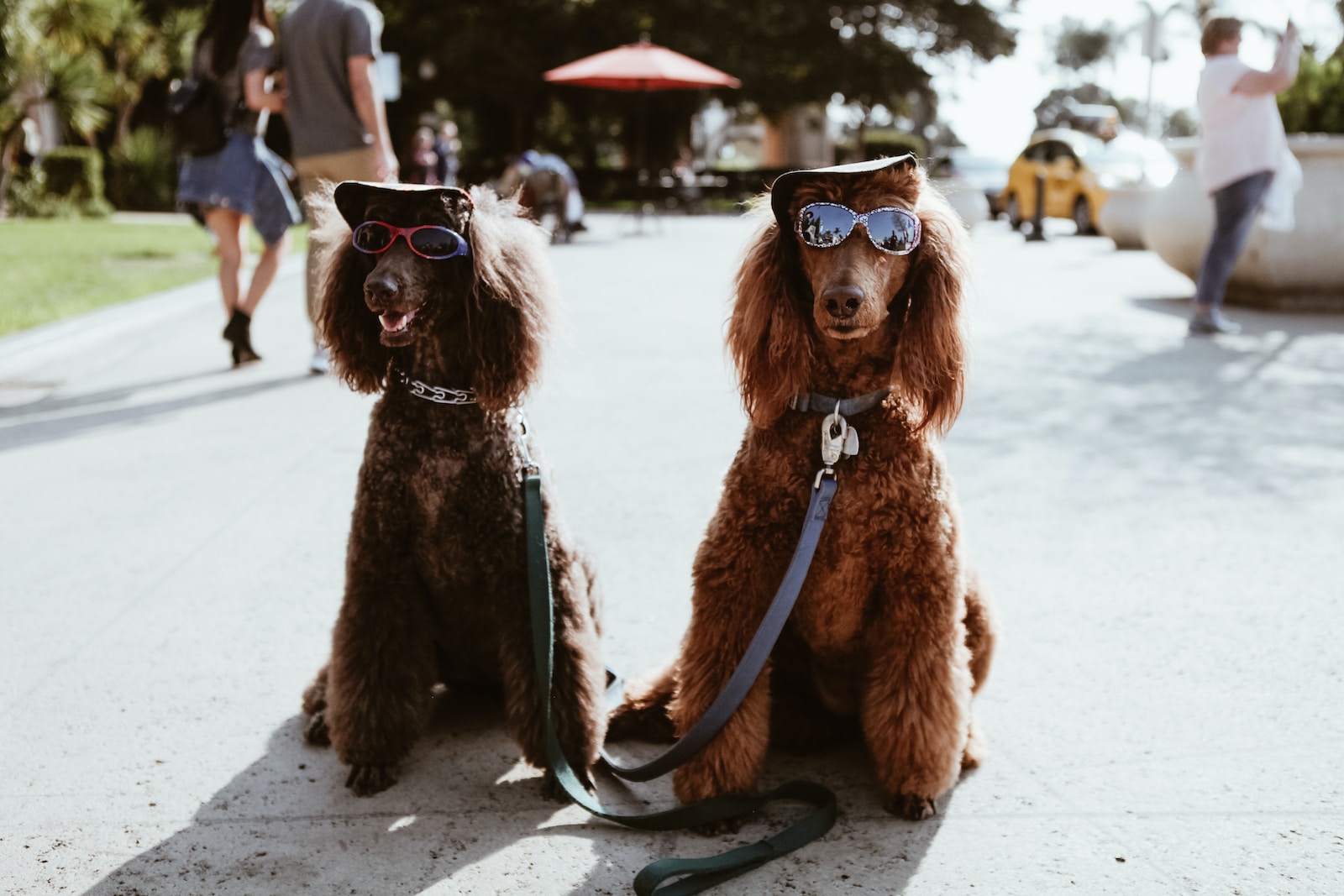In the vast tapestry of life, dog breeds weave a vibrant and diverse pattern. Like stars scattered across the night sky, these breeds vary in size, shape, and temperament, each possessing its unique charm.
From aristocratic Afghan Hounds to playful Pugs and loyal Labrador Retrievers, our world is blessed with abundant canine companions.
But amidst this colorful array, have you ever wondered how many dog breeds exist? The answer lies within a labyrinth of history and classification. It is a journey that takes us back to the origins of domestication and selective breeding, where humans have played a pivotal role in shaping the myriad forms we see today.
In this article, we will explore dog breed diversity – from popular breeds cherished across continents to rare gems hidden within the folds of time. We will delve into the factors that influence breed development and ponder upon the future trajectory of this fascinating realm.
Join us as we unravel the mysteries behind this enchanting mosaic of canine diversity, aiming to serve knowledge seekers who yearn for insights into our beloved four-legged friends.
Key Takeaways
- Dog breeds vary in size, shape, and temperament.
- Selective breeding has allowed humans to create distinct breeds with specialized skills and appearances.
- Dog breeds have served various roles throughout history, such as hunting, herding, guarding, and companionship.
- Breed standards provide guidelines for breeders to follow when selecting and breeding dogs.

The Origins of Dog Breeds
The origins of dog breeds can be traced back to ancient times when humans first began domesticating wolves and selectively breeding them for specific traits.
Dog breeds have significantly impacted human history, serving various roles such as hunting, herding, guarding, and companionship.
Different regions and cultures played a significant role in the development of various dog breeds. For example, in Europe, breeds like the Border Collie, German Shepherd, and Labrador Retriever were bred for herding and retrieving tasks. In Asia, breeds such as the Shih Tzu, Akita, and Shiba Inu have ancient origins and were bred for companionship and guarding purposes.
Dog breeds also emerged as a result of geographical isolation. Isolated populations of dogs developed distinct physical and behavioral traits adapted to their local environments. For instance, the Basenji, originating from Central Africa, is known for its unique yodel-like vocalizations and resistance to certain diseases.
In the 19th century, the concept of dog breeding became more systematic, and breed standards were established. These standards defined the ideal characteristics for each breed, including appearance, size, and temperament. Dog shows and kennel clubs played a crucial role in promoting and preserving specific breeds.
It’s important to note that the process of dog breeding has not been without controversy. Some breeds were bred for exaggerated physical traits, which can lead to health issues and reduced quality of life. In recent years, there has been a growing focus on responsible breeding practices prioritizing dogs’ health and well-being.
Overall, the origins of dog breeds are a result of human intervention and selective breeding over centuries. The diverse array of dog breeds we have today is a testament to the long and complex history of our relationship with these remarkable animals.
The Classification of Dog Breeds
Categorizing canine lineages involves classifying distinct variations based on their genetic and physical traits.
Dog breed standards are crucial in this process, providing guidelines for breeders to follow when selecting and breeding dogs. These standards outline the ideal traits that a particular breed should possess, including size, coat color and texture, body proportions, and temperament.
Kennel clubs and breed organizations establish breed standards to maintain consistency within each breed.
Crossbreeding trends have also influenced the classification of dog breeds. Over time, new breeds may emerge due to intentional crossbreeding between two or more established breeds. These new breeds often possess unique combinations of traits from their parent breeds, creating additional diversity within the overall classification system.
By adhering to dog breed standards and considering crossbreeding trends, researchers can effectively classify the vast array of existing dog breeds. This classification system provides valuable information for both dog enthusiasts seeking specific traits in their pets and professionals working in fields such as veterinary medicine or animal behavior.
Famous Dog Breeds Across the World
Popular dog breeds worldwide vary in size, temperament, and physical characteristics, reflecting the diverse preferences and cultural influences of dog owners worldwide.
Different countries have unique breeds that are popular within their respective regions. For example, the German Shepherd is widely recognized as a versatile breed known for its intelligence and loyalty, making it a popular choice for police and military work in many countries.
In Japan, the Shiba Inu is highly regarded as a small yet spirited breed with a fox-like appearance. This breed has gained popularity in Japan and internationally due to its independent nature and adorable looks.
Additionally, certain dog breeds are specifically bred for different purposes, such as hunting or herding livestock. These purpose-bred dogs are valued for their innate abilities and instincts that make them well-suited for specific tasks.
The popularity of dog breeds varies across different countries based on cultural preferences and practical needs.

Rare and Unique Dog Breeds
Uncommon and distinctive, certain dog breeds possess characteristics that set them apart from the more common and widely recognized breeds. These rare and unique dog breeds captivate the imagination with their exotic appearances, making them highly sought after by enthusiasts.
Here are four examples of uncommon dog breeds that showcase their distinctiveness:
1) Xoloitzcuintli: Originating from Mexico, this ancient breed is known for its hairless appearance and vibrant personality.
2) Azawakh: Hailing from West Africa, this elegant sighthound boasts a slim physique and exceptional speed, capturing attention wherever it goes.
3) Bergamasco Shepherd: This Italian breed stands out due to its characteristic dreadlock-like coat that provides insulation and protection.
4) Thai Ridgeback: Recognized by its ridge of hair along the back that runs in the opposite direction to the rest of the coat, this breed originates from Thailand and showcases an independent yet loyal nature.
These uncommon dog breeds offer a unique experience for those seeking a distinctive companion who can bring joy while serving others.
Factors Influencing Dog Breed Diversity
Many factors contribute to the diverse range of dog breeds available today, shaping their distinct characteristics and traits.
One significant factor in dog breed diversity is the process of dog breed evolution. Over centuries, humans have selectively bred dogs for specific purposes such as hunting, herding, or companionship. This selective breeding has resulted in the creation of various breeds with specialized skills and physical attributes.
In addition to human intervention, genetic factors also play a crucial role in breed diversity. A dog’s genetic makeup determines its physical appearance, temperament, and predisposition to specific health conditions. Through careful breeding practices and an understanding of genetics, breeders can manipulate these genetic factors to create new breeds or enhance existing ones.
The interplay between human influence and genetic factors contributes to today’s incredible variety of dog breeds. By understanding these factors, we can better appreciate the rich tapestry of canine diversity and continue to shape it for future generations.
The Future of Dog Breeds
Genetic research and technological advancements will shape the future of dog breeds as breeders utilize a sophisticated understanding of genetics to manipulate traits and selectively create new breeds with unique characteristics. These advancements allow for identifying and manipulating specific genes, allowing breeders to intentionally select for desired traits such as appearance, temperament, or health.
However, ethical concerns arise when considering the potential negative consequences of intensive breeding practices on dog welfare. Breeders must prioritize the health and well-being of dogs over aesthetic preferences or exaggerated physical features. Striking a balance between creating new breeds that meet specific needs and preserving existing breeds’ overall health and diversity is crucial. Responsible breeding practices incorporating genetic testing, responsible selection criteria, and strict adherence to animal welfare standards are essential to ensure a sustainable future for dog breeds.
| Advancements | Ethical Concerns | Responsible Breeding |
|---|---|---|
| Genetic research allows breeders to selectively manipulate traits | Intensive breeding can impact dog welfare | Genetic testing ensures healthy breeding |
| Technology aids in identifying specific genes for desired traits | Aesthetic preferences may compromise dog health | Responsible selection criteria prioritize well-being |
| Unique characteristics can be created through selective breeding | Exaggerated physical features may lead to health issues | Adherence to animal welfare standards is necessary |
Table: Factors influencing the future of dog breeds

See also:
10 Fascinating Facts About the Mini Sheepadoodle
Teddy Bear Dog: Breeds, Health, Training, Playtime Guide
Frequently Asked Questions
What are some common health issues that affect specific dog breeds?
Small breeds commonly experience health issues such as dental problems, patellar luxation, and hypothyroidism. Large dog breeds are prone to issues like hip dysplasia, bloat, and heart disease. Taking care of these concerns is crucial in serving the well-being of these dogs.
Are there any dog breeds that are hypoallergenic?
There is no scientific evidence to support the claim that any dog breed is completely hypoallergenic. While some breeds may produce fewer allergens, individuals with allergies may still experience symptoms.
What are the most popular dog breeds for families with children?
When it comes to choosing the right breed for a family with children, popular options include Golden Retrievers and Labrador Retrievers. These breeds are known for their friendly and gentle nature, making them suitable companions in apartments.
Can you provide information on the average lifespan of different dog breeds?
The average lifespan of small dog breeds ranges from 10 to 15 years, while large dog breeds have an average lifespan of 8 to 12 years. Understanding these lifespans can assist in selecting a suitable breed for those seeking companionship.
Are there any dog breeds that are particularly prone to certain behavioral problems?
Certain breeds are more prone to certain behavioral problems. Some breeds may exhibit higher levels of aggression, while others may be known for their intelligence and trainability. Potential owners need to research breed-specific traits before choosing a dog.
Conclusion
In conclusion, the diversity of dog breeds is a testament to the intricate tapestry of life.
From their ancient origins to their classification and popularity across the globe, dogs have captivated our hearts with their unique traits and characteristics.
The influence of various factors on breed diversity highlights the complex interplay between nature and nurture.
As we look towards the future, let us cherish these remarkable creatures who bring joy and companionship into our lives, reminding us of the boundless possibilities that exist within our world.
Come help us at Bone Voyage Dog Rescue save the lives of animals! Every wagging tail, moist nose, and eager yelp need your help. We can improve the lives of neglected and abandoned pets by working together.
Donate right away to offer them a second shot in a home filled with warmth, love, and stability. Let’s get out on this amazing adventure of compassion together and build a better future for our canine companions.
Be a hero for those who require it most by taking immediate action. Join Bone Voyage Dog Rescue as we set sail for a future where every dog may experience the joy of a devoted family. Change lives right now by giving, volunteering, or adopting!
